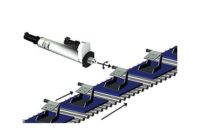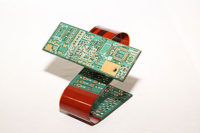Finding defects in electronics assemblies is a never-ending search, driven by the need to improve the assembly process and product quality, and reduce manufacturing costs. Over time, this search has unearthed a wide range of test and inspection strategies.
There are several PCB test strategies to choose from, including functional, in-circuit, boundary-scan and manufacturing defects analyzers. In-circuit testing has been a consistently popular test strategy. In-circuit testers evaluate individual components after they’ve been soldered to the PCB. In-circuit testing harkens back to a simpler time, when PCBs were one-sided, and a bed of nails could contact the board on the opposite side. The theory behind in-circuit testing is that if a PCB is designed and built correctly, it will perform correctly. "The in-circuit guy says, ‘Look. If the design is right, which has been validated, and the parts coming in are good, all I really want to do is make sure that I’ve put them together correctly," says Ken Hallmen, marketing manager for CheckSum (Arlington WA).
With the introduction of high-density PCBs, circuit node access has dwindled. Boards have evolved from the simple to the complex, such as double-sided and multilayer boards. This increased density means increased performance and power in smaller packaging systems. It also allows for smaller, higher-performance products. However, it may mean trouble for in-circuit testing. Some industry watchers predict that in-circuit testing will decline, and functional testing will move to the head of the testing class.
Functional Testing’s Function
Functional testing is always the last gatekeeper in the manufacturing plan. It provides a go or no-go decision on finished PCBs. By the time you get up to the functional tester, you are testing functionality of the product. You’re not testing whether the board is good or not. You’re not testing whether the solder is there or not. And you’re not testing whether the parts are within tolerance or not. What you’re testing is whether it works as it should. "A functional tester looks at the entire product. It looks at it from the view that ‘we know all the parts are there and it’s assembled right. Does everything work together?’ There can always be some fault where this device is a little bit slow, or it doesn’t talk to the next device. So you make sure that everything can communicate," says Bob Stasonis, product marketing manager for commercial functional testing at Teradyne (Boston).
To test a PCB’s functionality, a functional tester interfaces to the PCB via its edge connector or a test-probe point. It then replicates the PCB’s final electrical environment. "For example, if a PCB is the end product going into a slot inside of a computer, then during functional testing, the slot that it’s actually going into when it’s placed into service will be simulated. If it’s going into a PCI interface, or if it’s a modem, electricity or communication will be applied in all the right places. The test program will then go through a series of codes to figure out what it needs to do to make sure that everything is fine," says Tim Nolte, business development manager for JOT Automation (Irving, TX).
Functional Testing’s Faults
Functional testing is certainly not a perfect testing solution. Functional testing involves a lot of variability, making it very complex. Variabilities include how much of the PCB is going to be tested, what type of inputs or stimuli is needed, what are the desired results and what are the testing parameters. "There are situations where you do a functional test for a certain setup. You then go in again, and through software, you set up the board or the product slightly different. You then do the same test again to see if you get the desired change. You could actually do a test that might have 50, 60, 70 different test routines that you’re going to run—depending on the product," says Duane Lowenstein, product manager at Agilent Technologies (Palo Alto, CA). "Then, if you told two companies to take the same product and set up the same functional test, you’d probably get different functional tests. That’s why the industry has been very slow in getting standard platforms. Standard platforms are usually set up for a certain technology, and as we know with technology, they move pretty rapidly now. SomeArial, it takes longer to come up with a standard platform than the technology is going to be living for," he concludes.Hallmen agrees. "Someone has to write up a functional test procedure. You’ve got to say, ‘Put some voltages in here, put the stimulus in there and look for that thing over there. It’s real important that this thing goes high if this thing goes low.’ It’s very complicated, and every single board is unique. It’s like picking a book out of the library. They’re full of words. We all know what the words are, but every one of them is in different order. And so the guy’s got to go and see if this book is right or not. They’ve got to read the whole book and say, ‘I wonder what the author meant when he wrote this book,’" he says.
Functional testing can also lack diagnostic capabilities. However, companies are introducing software that provides automated diagnostics for functional testers. One such product is Fault Detective 2.0 from Agilent Technologies. Fault Detective automates functional test diagnostics of PCBs and electronics subsystems during assembly. A model describes each test path at the part or bus level. Failing paths determine possible failing devices. Passing paths allow users to eliminate some parts from consideration. The reasoning engine examines the model and test results to produce a ranked list of possible component causes.
Functional Testing Components
Functional testers are as unique as the products that they test. Testers can be standalone, hot mock-ups or rack-and-stack. An electronics manufacturer can have a vendor design and build it, or in some cases, the company might build its own custom system using its test engineering group.Regardless of whether it is homemade or built by a test system manufacturer, there are general components that a functional tester should have. A functional tester generally comprises the system, the hardware and the software.
The system includes the physical cabinet, the interface to the device to be tested, the cabling to connect all of the instruments, the central processing unit and the monitors.
The hardware is the instrumentation, the power supplies and the loads for the product being tested. The hardware depends on the parameters to be tested on that product. The software is the actual operating system, the test executive and tool sets.
Another part of a functional testing system is the development environment. This is where the test executive and what actions are to be taken interact with how the hardware is to be used to exercise the product.
Future of Functional Testing
Industry insiders believe future functional test platforms will need many of the features found in today’s in-circuit test systems. For example, modularity is increasingly important to functional testing. Manufacturers are moving from proprietary functional testers to modular test systems that can be reconfigured. This makes more economic sense for electronics manufacturers who built custom systems for each individual application.Nolte predicts that functional testing will continue to move from hardware toward software. Today’s engineers "can make virtual test systems. Designers can pretty much grab what they need and convert these test systems from doing one job to doing another without having to replace hardware components," says Nolte.
Another in-circuit testing trend that promises to expand into functional testing is the availability of public "libraries" of different test routines. Component manufacturers, for example, will begin providing functional test parameters of their components. "Someone’s going to make an operating system where you can just plug in these components and create a library of different things. So the next time that you come out with a product, you won’t have to start from scratch," says Lowenstein.
Stasonis believes test manufacturers will have to learn to provide total solutions where necessary, but also be able to unbundle their products and sell tool sets. "The do-it-yourselfer is not going away. I see that more and more," he says. "Our customers are being squeezed on their profit margins and they can’t come to us for a $300,000 to $500,000 solution anymore. They’re going to roll something in the back room, and I want to make sure that our tools and our software are part of it. The other advantage, too, is that if they do standardize tool sets and they need a total solution, they will also come to us as well," says Stasonis.


